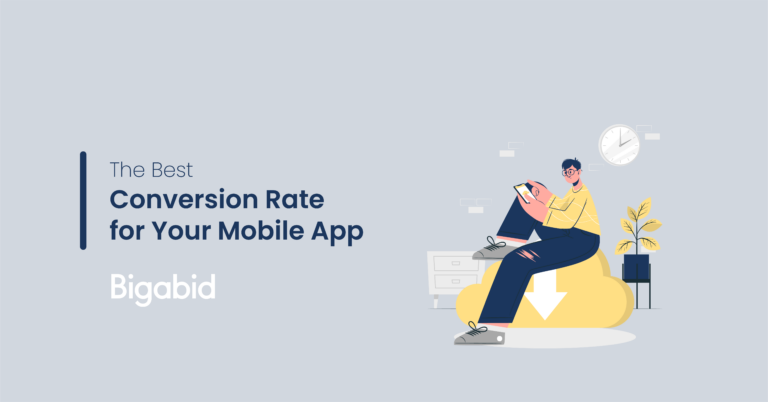
Most Mobile marketers work tirelessly to increase their app’s conversation rate. The conversation rates they’re chasing could apply to app store installs, in-app purchases, subscriptions, etc., but the idea is the same… get your prospect to complete an action that converts them to a paying customer.
But what action should you be measuring? And how can you increase the likelihood of that action? As conversion rate optimization gets increasingly sophisticated with machine learning technologies, click-to-install conversion rates are no longer enough. This article will unfold the best practices in measuring conversion rates, the importance of segmentation, and how to optimize conversion rates for your app.
Basically, conversion rate measures the percentage of people who take a desired action against those who don’t take that action but could have. According to the app stores, conversion rate is measured as the ratio of total downloads to unique Impressions, where unique impression is counted when a customer views your app in the store.
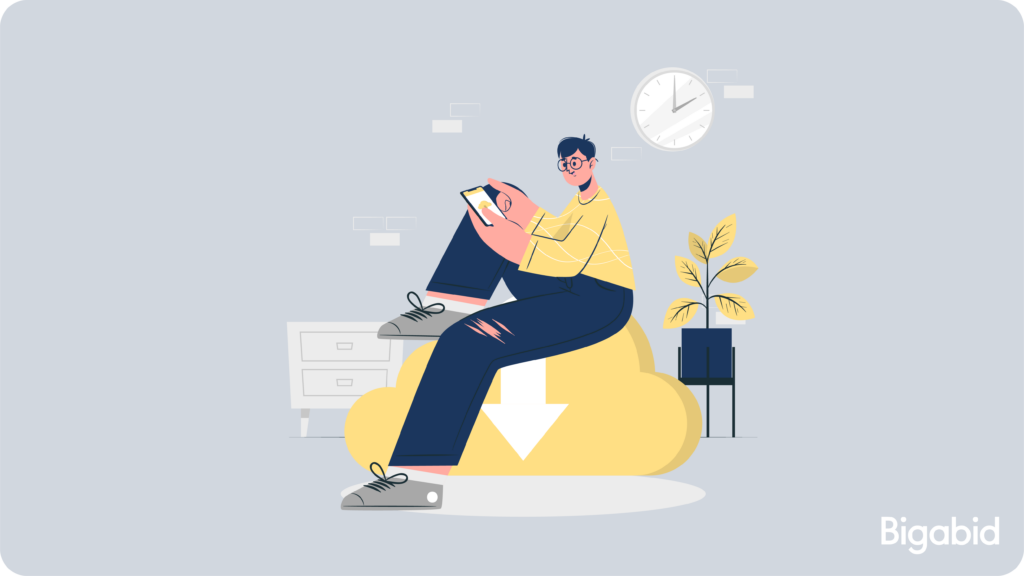
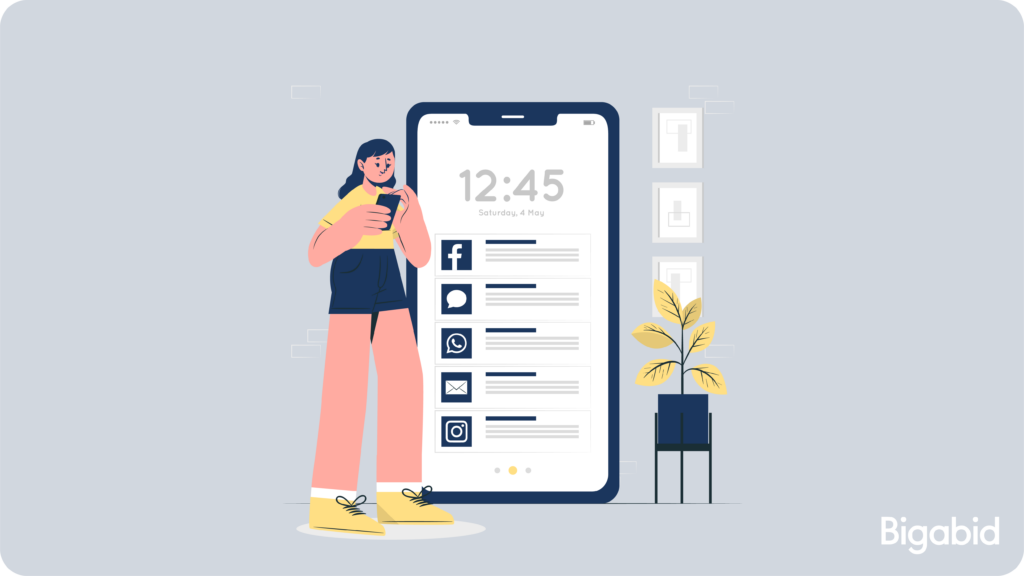
To calculate a conversion rate you divide the number of impressions by the conversion action or event: (Conversion Action / Impressions) x 100 = Conversion Rate
Here’s a simple example:
Let’s say you run a mobile ad campaign on a given platform. After the campaign, data shows that your ads reached 100,000 people on that platform. In other words, you achieved 100,000 impressions.
Now let’s say the action (conversion event) you measured is how many people installed your app. Let’s say there were 50 installs.
With the equation, (Conversion Action ÷ Installs) x 100 = Conversion Rate, your conversion rate would look like this: (50 ÷ 100,000) x 100 = 5%. So your mobile ad campaign had an install conversion rate of 5%, not bad.
Installs are an important milestone in your app’s growth, but what really matters is your long-term ROAS. You need to make your app commercially viable. The most important conversion rate metric for your app should be your install to “value” rate.
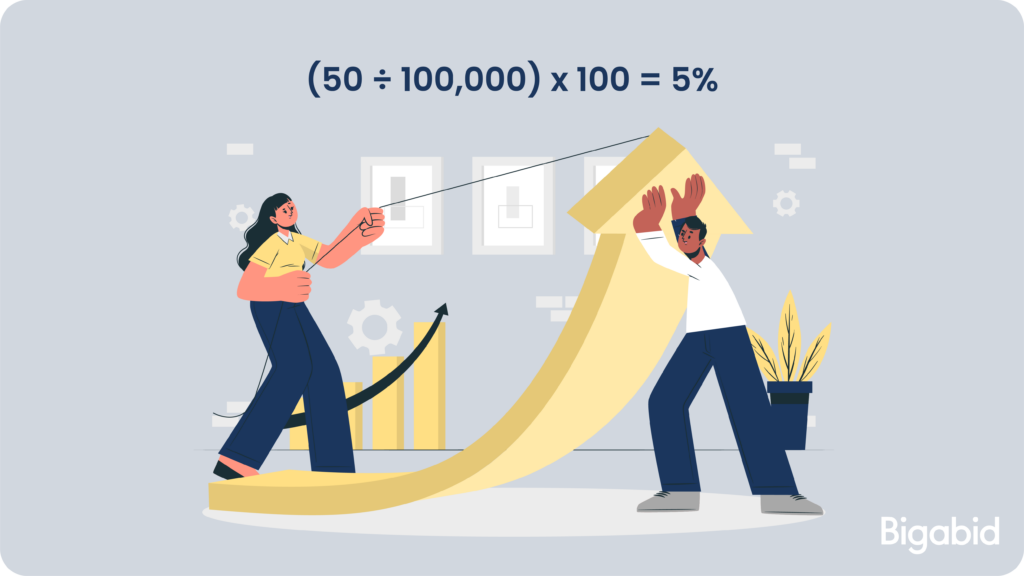
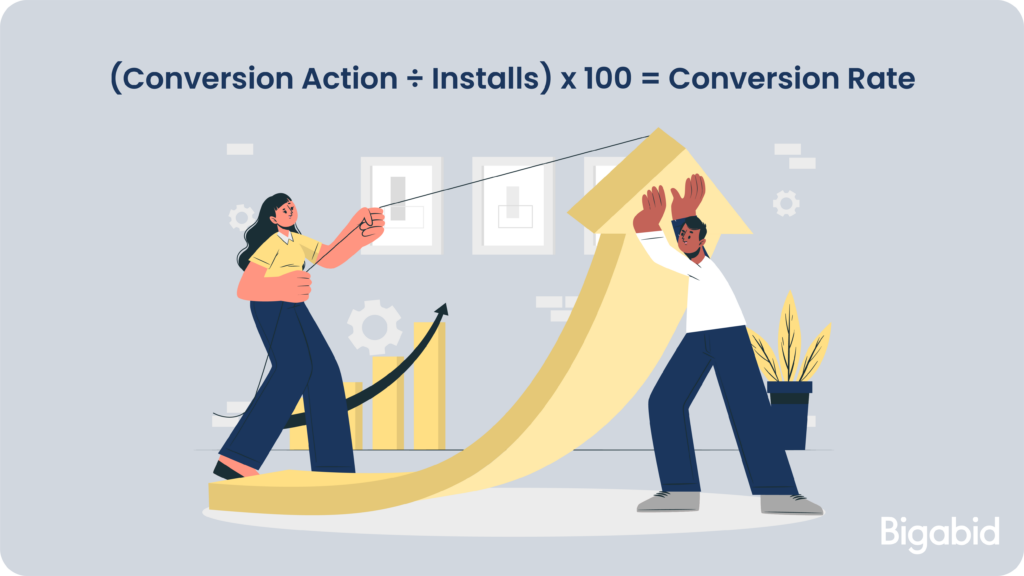
Today, app retention, engagement, and LTV (Life-Time Value) are the critical challenges for mobile app marketers. Considering how much competition there is, it’s no surprise that roughly 20% of users churn after a single use and roughly 70% churn within 90 days. So which value-driven conversion rates should you be measuring and how can you optimize them? It all starts with effective user segmentation.
User segmentation is the marketing technique of dividing up (segmenting) your user base into segments based on diverse parameters and then delivering the most relevant ads to each segment for more accurate retargeting. One could say, segments make up the secret sauce for successful mobile app retargeting activity.
Examples of segments could include nationality, app version, player’s age, level reached in-app, paying, non-paying, and much more.

Tips and Definitions of Useful User Segments
Learn more about Targeting High LTV Users.
Check out 5 Tips for Successful Retargeting Ads in Gaming.
Read more about Real-Time Data Analysis.
Check out Creative Personalization for more on the phycological factors in creatives.
With retention, engagement, and LTV (Life-Time Value) as your goals, segmentation allows you to measure various in-app events for a value-driven conversion rate. The trick is deciding which segments you value, which often depends on the genre.
For example, you are growing a role-playing gaming app, and you have learned that users who build a unique avatar vs using a stock one are much more likely to be retained and make in-app purchases over time. Or you have a casino app and find that users who grow their bets from small to larger vs diminish from large to small tend to spend more money over time.
Depending on your genre, there are all kinds of segments and corresponding conversion rates that will improve your ROAS. It’s all a matter of testing, testing, and more testing, and that’s why a modern, AI-driven, transparent Gen 2 DSPs are essential. The deeper you go, the better results.
Read more about how important it is to work with Second-Generation DSPs.
We’ve learned that conversion rate and its optimization in mobile app marketing needs to be focused on install-to-value rate more than the click-to-install rate. And to determine value, it’s crucial that you are measuring the right segments. In an app economy dominated by low retention, free apps, and giant spends, it’s crucial to work with the right experts to help you measure and optimize to find users with the highest LTV.
Bigabid prides itself on using sophisticated machine learning technologies to both accurately measure and optimize your campaigns, and also transparent partnering to share insights to ensure your app’s success over time. To learn more about how to grow your app, reach out!